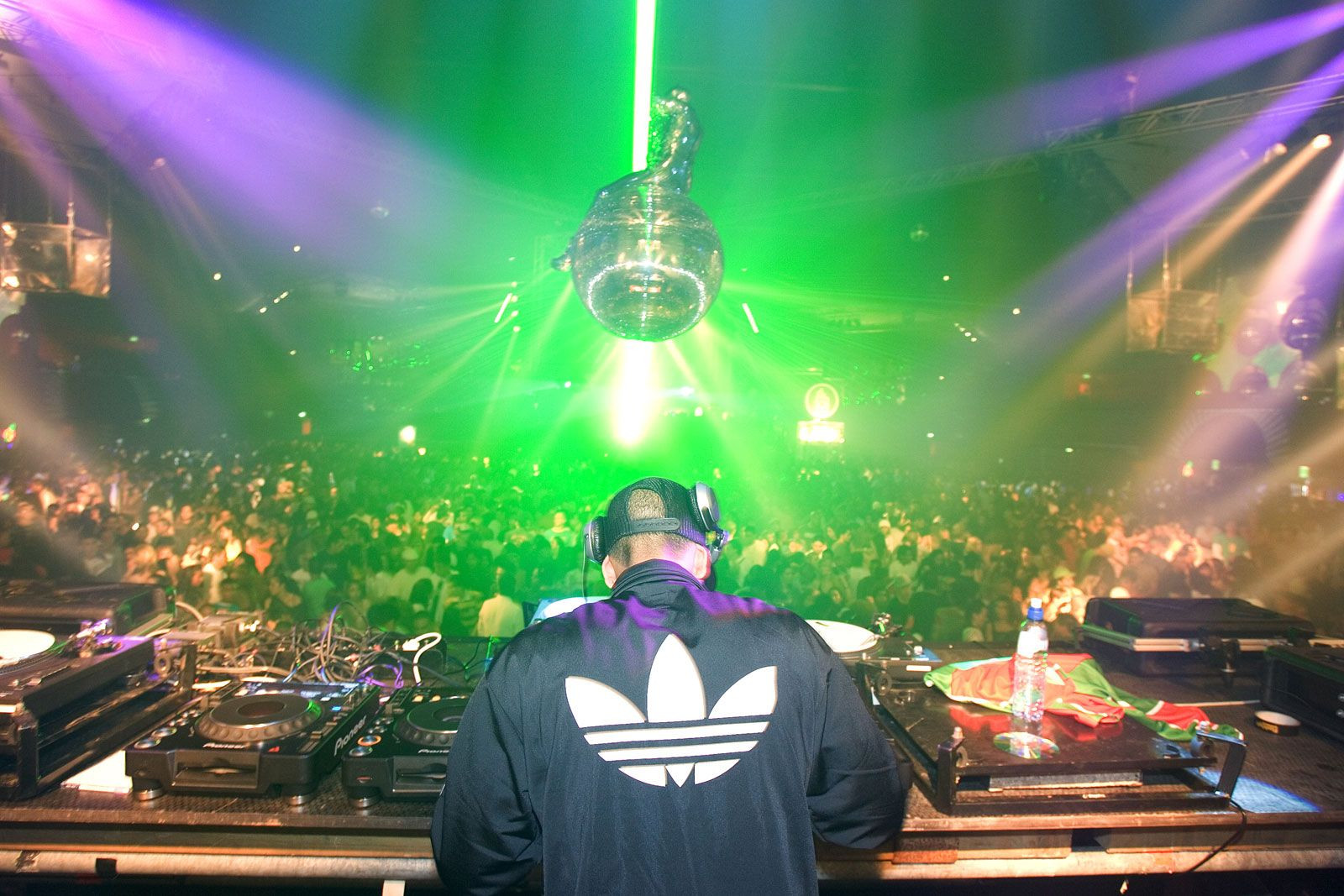Dance/electronic music is more than just a genre; it’s a global movement that fuels dance floors and festivals worldwide. Often referred to as EDM, this vibrant and diverse category encompasses a spectrum of sounds, from the energetic rhythms of house music and techno to the immersive soundscapes of trance and beyond. Emerging from underground club scenes in the 1980s, dance/electronic music has evolved into a dominant force in global culture, captivating audiences with its infectious beats and innovative sounds. Let’s explore the captivating world of dance/electronic music, tracing its origins, diverse styles, and the culture it has created.
The American Roots: Chicago House and Detroit Techno
The story of dance/electronic music’s global ascent begins in the American Midwest, specifically in Chicago and Detroit during the early 1980s. In Chicago, Frankie Knuckles, the resident DJ at the Warehouse club, a pivotal venue for African American gay culture, pioneered a sound that would become known as house music. Knuckles masterfully re-edited disco tracks, extending instrumental sections and adding drum machine rhythms to create an irresistible, dance-focused experience that kept the energy high throughout the night. Alongside other Chicago DJs like Ron Hardy, Steve Hurley, and Farley Jackmaster Funk, Knuckles solidified the foundational elements of house music, characterized by its four-on-the-floor beat, soulful vocals, and driving rhythm.
 Frankie Knuckles spinning records in his Chicago home, a pioneer of house music.
Frankie Knuckles spinning records in his Chicago home, a pioneer of house music.
Simultaneously, in Detroit, a different yet equally influential sound was taking shape: techno. Juan Atkins is widely recognized as a key originator of Detroit techno. In 1981, Atkins, along with Rik Davis as Cybotron, released “Alleys of Your Mind,” a track that showcased the futuristic and industrial soundscapes that would define techno. Following the split of Cybotron, Atkins launched Metroplex Records and began releasing music under the name Model 500. Soon, Kevin Saunderson and Derrick May, fellow members of the Deep Space DJ collective with Atkins, established their own labels, KMS and Transmat, respectively, further propelling the Detroit techno scene. This scene produced abstract, instrumental funk infused with electronic innovation, often featuring synthesizers and drum machines to create a distinctive, forward-thinking dance sound. While Saunderson sometimes incorporated vocals, notably with Inner City, the core of Detroit techno remained instrumental, emphasizing rhythm and sonic experimentation. The term “Techno Music” was solidified in 1988 when Atkins named a track as such, contributing to the seminal compilation Techno! The New Dance Sound of Detroit, which formally defined the genre.
The Rave Revolution and Global Dancefloor Domination
Dance/electronic music’s global explosion can be traced back to a pivotal summer in 1987 when a group of UK DJs visited Ibiza. At Amnesia, an open-air club, DJ Alfredo played an eclectic mix, heavily featuring Chicago house and Detroit techno. Inspired by the atmosphere and enhanced by the effects of MDMA (Ecstasy), the DJs experienced the music in a transformative way. This Ibiza experience ignited a cultural phenomenon that would reshape youth culture in the UK and beyond.
In December of the same year, Danny Rampling, one of the DJs from that Ibiza trip, launched Shoom, a weekly party in a London fitness center. The scene quickly became known as “acid house,” named after the distinctive, squelching “acid” sound created by the Roland TB-303 synthesizer, prominent in many Chicago house records. Within a year, acid house became the most significant youth music movement in England since punk rock. Raves, often illegal parties held in fields and warehouses, became the epicenter of this movement. These events were characterized by vibrant Day-Glo colors, oversized, comfortable clothing blending hip-hop styles with video game aesthetics, and a sense of collective euphoria.
 A vibrant crowd immersed in the energy of electronic dance music at a festival.
A vibrant crowd immersed in the energy of electronic dance music at a festival.
The rave culture model spread rapidly across Europe and eventually to North America by the early 1990s. From these rave roots, dance/electronic music diversified into countless subgenres, each with its unique sonic identity and dancefloor appeal. DJ-driven dance scenes emerged worldwide, continuously evolving with new styles and variations, ensuring the global dancefloor remained vibrant and dynamic.
Key Elements of Dance/Electronic Music
Several core characteristics define dance/electronic music as a whole. A defining feature is the intentional use of synthetic sounds and timbres. Early and affordable 1980s equipment like the Roland TB-303 bass synthesizer and the Roland TR-808 drum machine became foundational tools, shaping the sonic landscape of early EDM. Sampling from existing recordings also became a common technique, adding layers of texture and referencing musical history within new tracks. While live instruments and vocals can be incorporated, they often serve as accents rather than central elements.
Crucially, dance/electronic music is fundamentally designed for social dancing and collective experience. Rhythm is paramount in most EDM genres, providing the driving force for movement and shared energy on the dance floor. Even ambient electronic music, while less beat-focused, serves a function within the dance music experience, often providing a sonic backdrop for relaxation and winding down after high-energy dancing. Furthermore, EDM tracks are primarily produced for DJs to play in clubs, mixed seamlessly with other tracks to create extended sets, prioritizing the continuous flow of music for the dancers. While many EDM tracks have achieved mainstream popularity, their core purpose remains rooted in the dance club and rave environment.
In conclusion, dance/electronic music has journeyed from underground scenes in Chicago and Detroit to become a dominant global cultural force. Its evolution, driven by technological innovation, cultural exchange, and a fundamental connection to dance, continues to shape music and nightlife worldwide. From the foundational sounds of house and techno to the ever-expanding universe of EDM subgenres, dance/electronic music provides a constantly evolving soundtrack for the global dancefloor.
